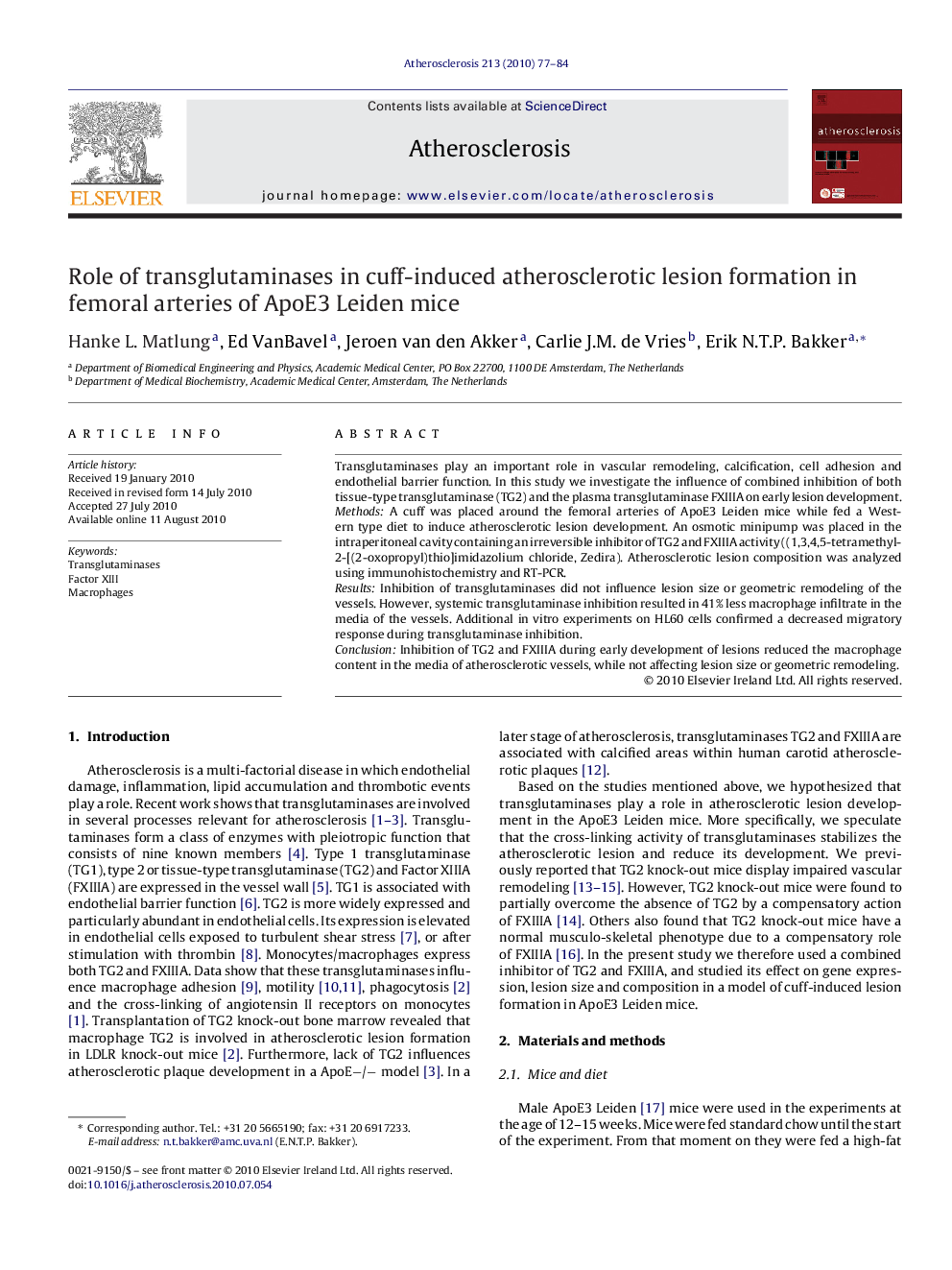| کد مقاله | کد نشریه | سال انتشار | مقاله انگلیسی | نسخه تمام متن |
|---|---|---|---|---|
| 2892987 | 1172403 | 2010 | 8 صفحه PDF | دانلود رایگان |

Transglutaminases play an important role in vascular remodeling, calcification, cell adhesion and endothelial barrier function. In this study we investigate the influence of combined inhibition of both tissue-type transglutaminase (TG2) and the plasma transglutaminase FXIIIA on early lesion development.MethodsA cuff was placed around the femoral arteries of ApoE3 Leiden mice while fed a Western type diet to induce atherosclerotic lesion development. An osmotic minipump was placed in the intraperitoneal cavity containing an irreversible inhibitor of TG2 and FXIIIA activity ((1,3,4,5-tetramethyl-2-[(2-oxopropyl)thio]imidazolium chloride, Zedira). Atherosclerotic lesion composition was analyzed using immunohistochemistry and RT-PCR.ResultsInhibition of transglutaminases did not influence lesion size or geometric remodeling of the vessels. However, systemic transglutaminase inhibition resulted in 41% less macrophage infiltrate in the media of the vessels. Additional in vitro experiments on HL60 cells confirmed a decreased migratory response during transglutaminase inhibition.ConclusionInhibition of TG2 and FXIIIA during early development of lesions reduced the macrophage content in the media of atherosclerotic vessels, while not affecting lesion size or geometric remodeling.
Journal: Atherosclerosis - Volume 213, Issue 1, November 2010, Pages 77–84